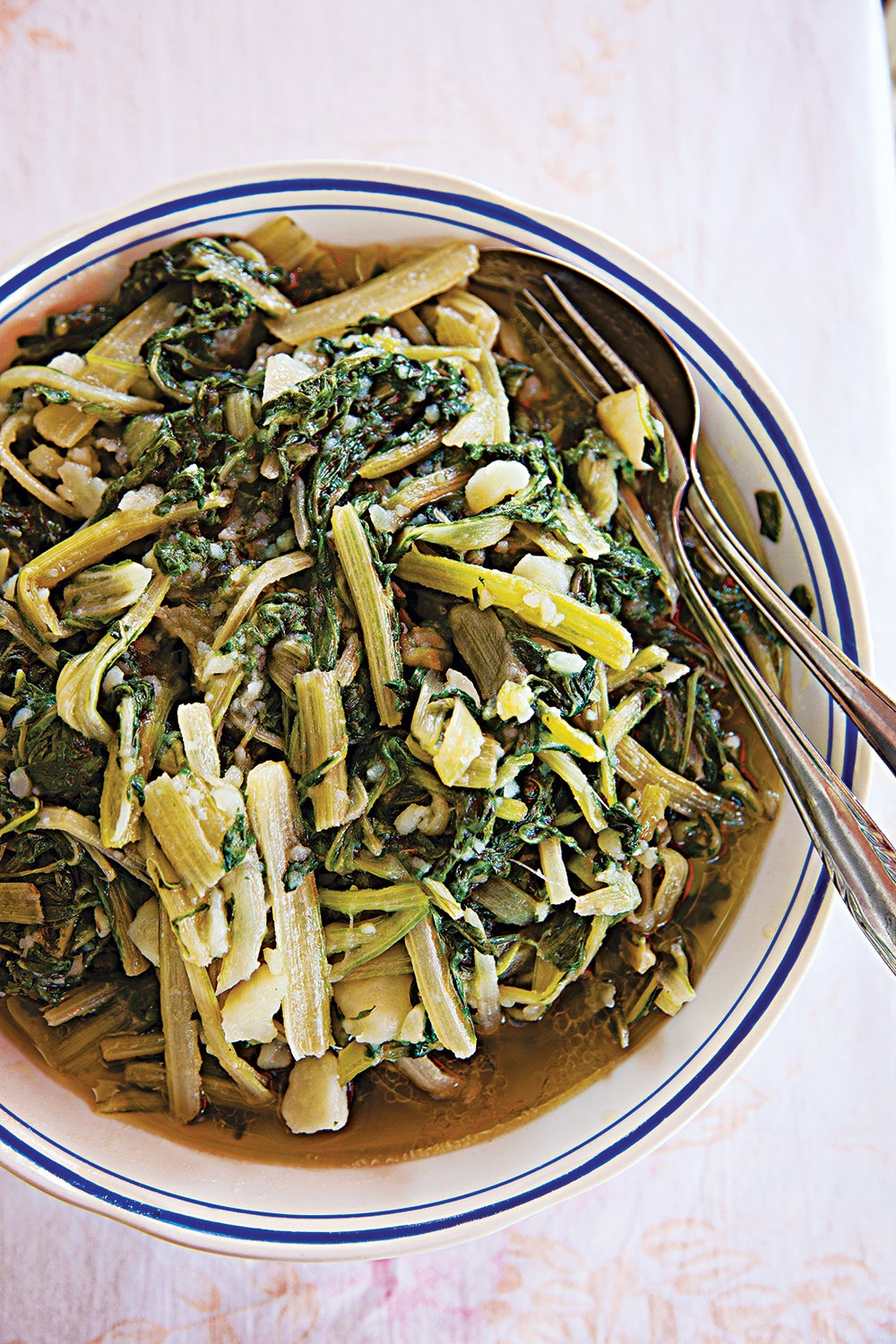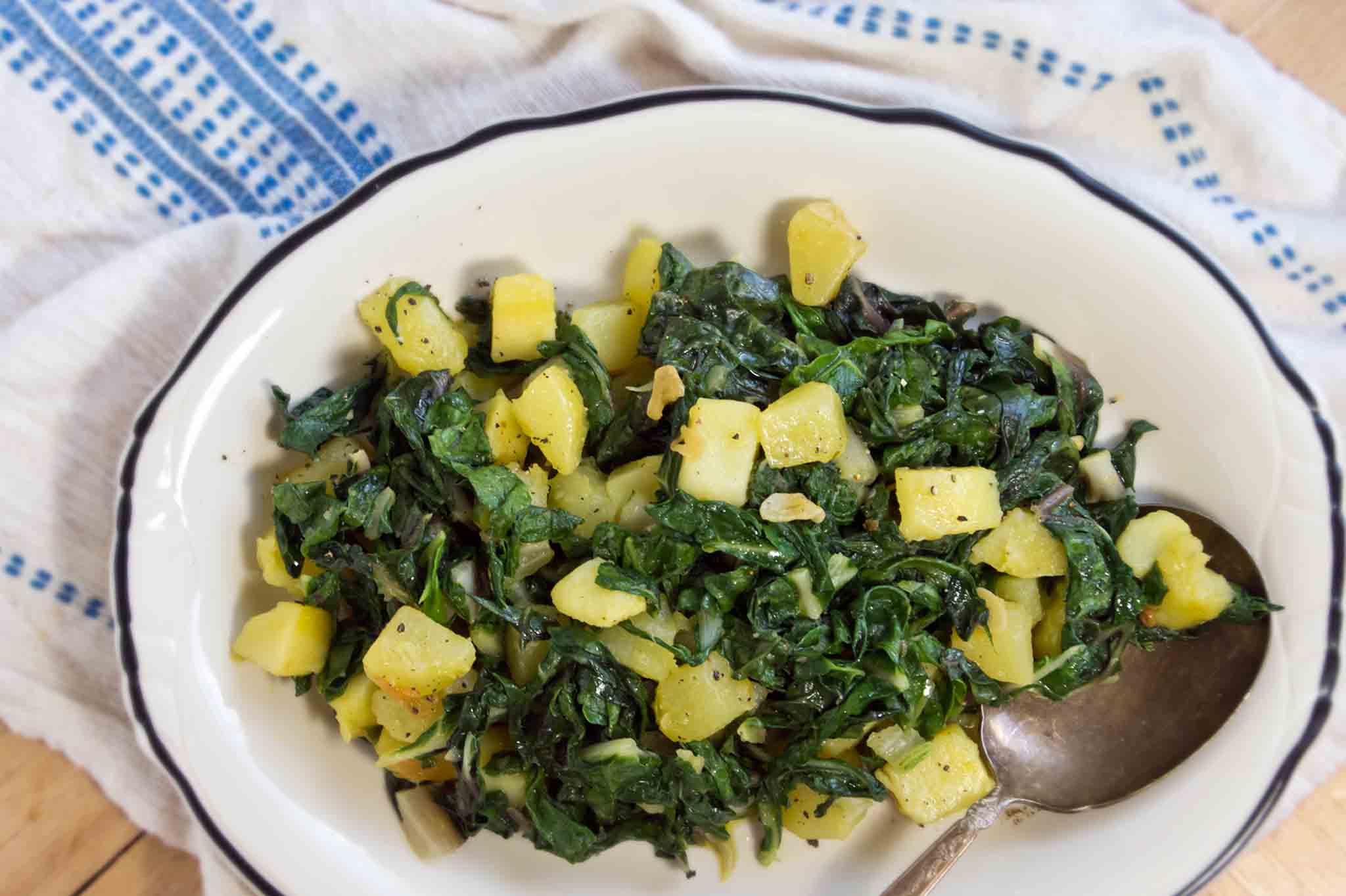Blitva
silverbeet, Swiss chard
Chard or Swiss chard is a green leafy vegetable. In the cultivars of the Flavescens Group, the leaf stalks are large and often prepared separately from the leaf blade; the Cicla Group is the leafy spinach beet. The leaf blade can be green or reddish; the leaf stalks are usually white, yellow or red. Chard, like other green leafy vegetables, has highly nutritious leaves. Chard has been used in cooking for centuries, but because it is the same species as beetroot, the common names that cooks and cultures have used for chard may be confusing; it has many common names, such as silver beet, perpetual spinach, beet spinach, seakale beet, or leaf beet. Chard was first described in 1753 by Carl Linnaeus as Beta vulgaris var. cicla. Its taxonomic rank has changed many times: it has been treated as a subspecies, a convariety, and a variety of Beta vulgaris. (Among the numerous synonyms for it are Beta vulgaris subsp. cicla (L.) W.D.J. Koch (Cicla Group), B. vulgaris subsp. cicla (L.) W.D.J. Koch var. cicla L., B. vulgaris var. cycla (L.) Ulrich, B. vulgaris subsp. vulgaris (Leaf Beet Group), B. vulgaris subsp. vulgaris (Spinach Beet Group), B. vulgaris subsp. cicla (L.) W.D.J. Koch (Flavescens Group), B. vulgaris subsp. cicla (L.) W.D.J. Koch var. flavescens (Lam.) DC., B. vulgaris L. subsp. vulgaris (Leaf Beet Group), B. vulgaris subsp. vulgaris (Swiss Chard Group)). The accepted name for all beet cultivars, like chard, sugar beet and beetroot, is Beta vulgaris subsp. vulgaris. They are cultivated descendants of the sea beet, Beta vulgaris subsp. maritima. Chard belongs to the chenopods, which are now mostly included in the family Amaranthaceae (sensu lato).
Source: Wikipedia
Recipes

Swiss Chard and Potatoes - Croatian Blitva Recipe | All that's Jas








